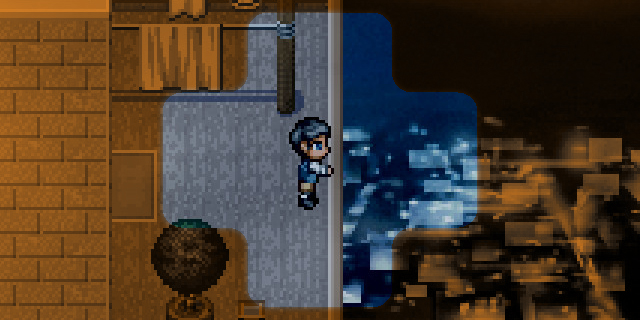
It can be easy to forget how tough telling a compelling story in a video game can be. Some games do it brilliantly, like last year’s Brothers: A Tale of Two Sons, but others tend to struggle. Sometimes telling a story within an interactive medium requires sacrificing some of the gameplay in order for the narrative to stand front and center. Kan Gao, the creator of one of my favorite games, To the Moon, fully understands this. No one will call it a masterwork of game design, but few can deny the impact of its story.
In lieu of a proper review, I thought I would take the time to talk about Kan Gao’s latest title, A Bird Story. Although it features no dialogue and is a lighter story than To the Moon, it’s a yet another prime example of finely-crafted interactive fiction.
A Bird Story tells the tale of a young boy who discovers an injured bird and makes it his mission to care for it while it heals, forming a bond with the creature. Due to the game’s short length and its emphasis on storytelling, going in-depth about the rest of the plot would ruin the experience, but it manages to encapsulate the themes of childhood better than most narratives, interactive or otherwise.

I wasn’t sure if the exclusion of dialogue would hurt or help the story, but it’s a testament to Kan Gao’s talents as a writer that it works flawlessly. Through the actions, environments and occasional fantastical element, you fully understand the character’s background and struggles. The dialogue-free nature of the story allows the actions of the characters to speak for themselves. It doesn’t interfere with any element of the narrative, instead enhancing it. It showcases how you can do a lot with a little.
Best of all, it allows those playing along to figure things out on their own without any hand-holding. You could argue the story is as plain as day, but particular elements may be lost on those who don’t pick up on specific nuances throughout. I played through it a second time and noticed many things that weren’t spelled out, making the final moments that much more impactful.
During my initial playthrough, I found the fantasy elements, including a memorable sequence involving a giant paper airplane, felt slightly out of place. Reality and fantasy are blended together so seamlessly that it can be jarring, yet upon reflection it all becomes clear. This is the story of a child and being told entirely from his perspective. The other characters don’t even have faces; they are mere shadows, only important to the context of the character’s actions and motives, not to the story as a whole.

Childhood imagination is something we rarely see done well in games, despite this medium being the perfect way to tell those stories. Think about Papa & Yo, which tells a story about abusive relationships and addiction all through the eyes of a child. Outside of the opening, the entirety of the game takes place in a fantasy world that reflects our own. Every part of the story, despite being fantastical in nature, is a mirror image of the main character’s reality. It may mask the truth, but it doesn’t shy away from it.
A Bird Story, despite its less serious subject matter, is very similar in approach. Even if you’re never quite sure what is and isn’t real, outside of specific situations, it uses a child’s imagination to shape the reality of the situation without attenuating it. You may not be able to distinguish what is and isn’t real, but in the end, it never matters; the story impacts you all the same.
With no dialogue, a simplistic narrative and the careful blend of reality and fantasy, A Bird Story is exactly the kind of game this medium needs. It manages to tell the story of a child without holding back the realities of life, but does so by presenting it from his perspective and thus giving it more weight. It’s light and won’t be as meaningful to some the way To the Moon was, but it’s brilliant all the same. At the end of the day, sometimes even the smallest games are the ones that have the most lasting impact.



















